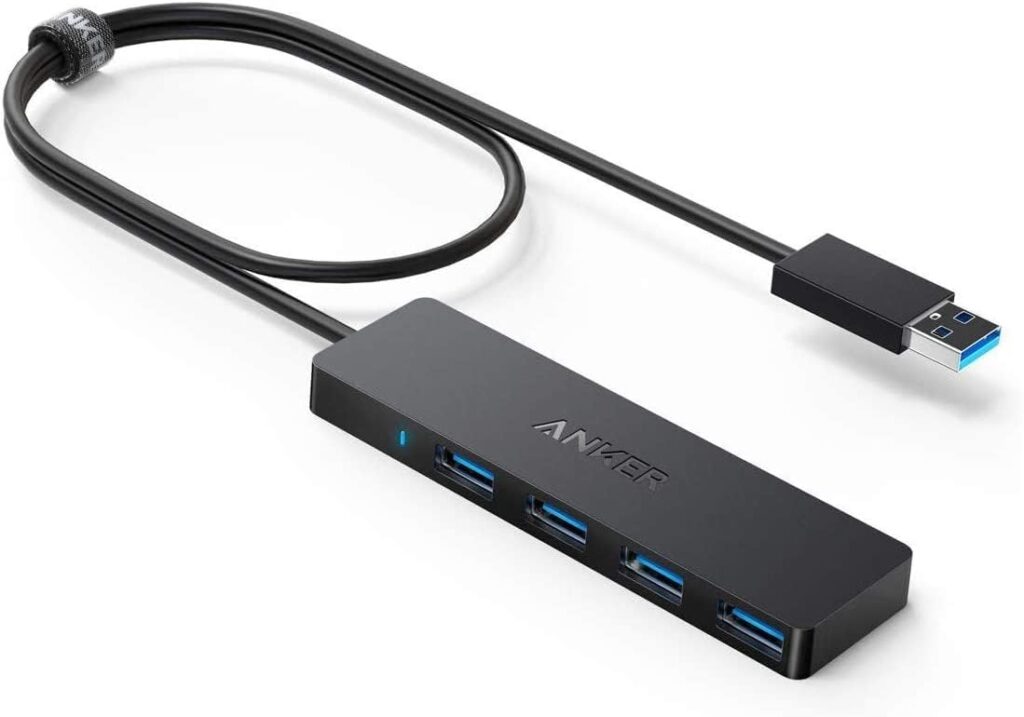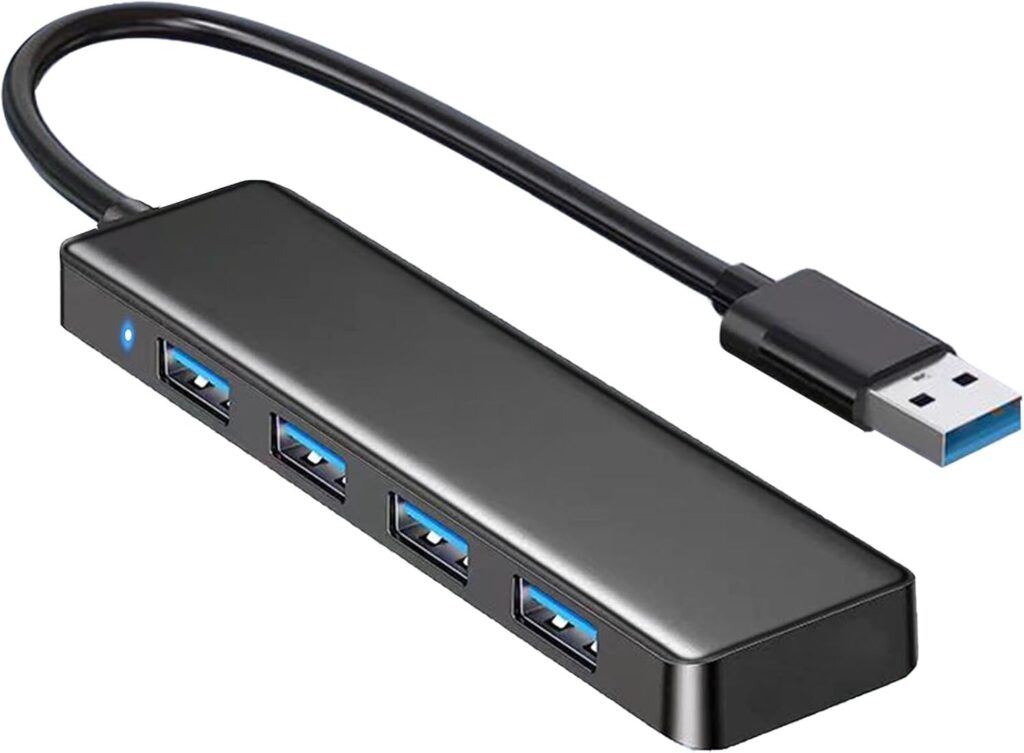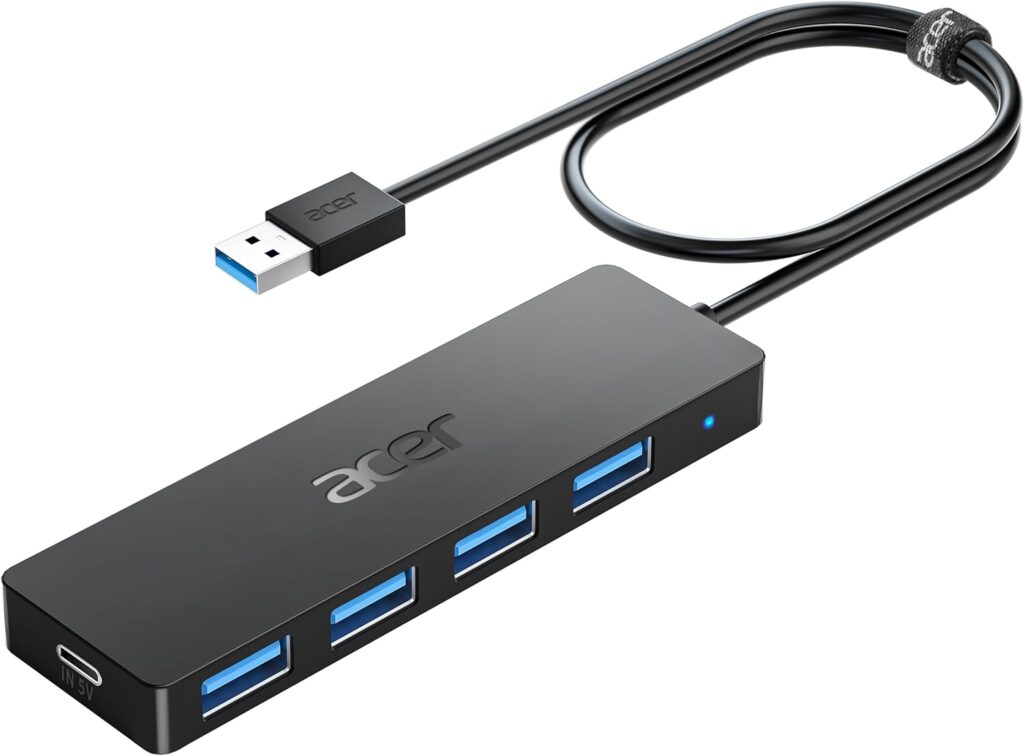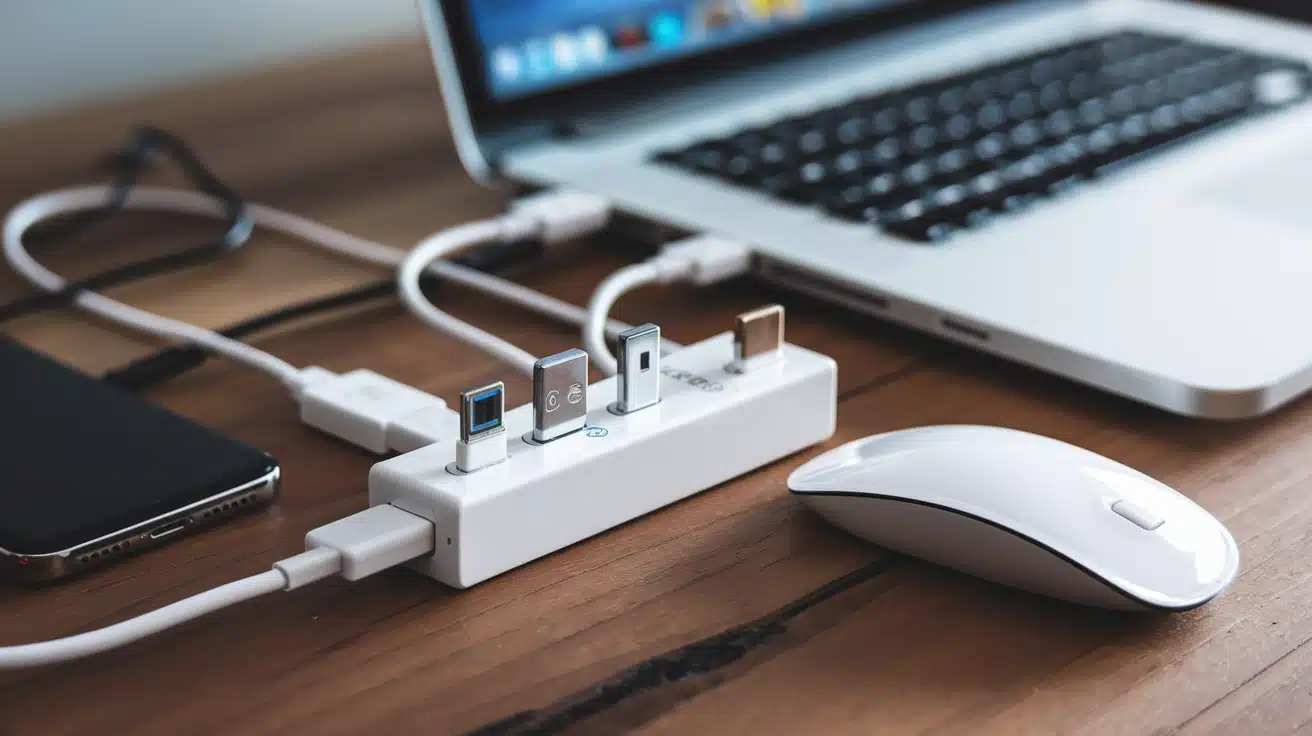In our increasingly connected world, the demand for efficient data transfer and charging solutions has never been higher. Whether you’re a tech enthusiast, a busy professional, or simply someone looking to streamline their cable management, a USB splitter can be a game-changer. These handy devices allow you to connect multiple USB devices to a single port, maximizing your equipment’s potential while reducing clutter. In this guide, we’ll explore the 3 best USB cable splitters available, equipping you with the knowledge to make an informed decision for your setup.
1. Anker 4-Port USB 3.0 Hub

The Anker 4-Port USB 3.0 Hub is a compact and efficient solution for anyone looking to expand their device connectivity. With a sleek design and ultra-slim profile, this hub easily fits into any workspace without adding bulk. Key features include lightning-fast 5Gbps data transfer speeds, ensuring quick and reliable file transfers between devices. It’s particularly compatible with a range of systems, including MacBook, iMac, and Surface, making it a versatile choice for both home and office use. However, it’s important to note that charging capabilities are not supported, which may be a consideration for some users.
Pros
- Ultra-slim design
- Slim design
- Can be used with or without an AC adapter
- Comes from a trusted brand with an 18-month warranty
- Anker’s 18-month warranty
Cons
- Can’t charge devices
- Included cable is short
2. VIENON USB 3.0 Hub

The VIENON 4-Port USB Hub is a versatile accessory that significantly enhances connectivity for laptops, consoles, and various devices. With its USB 3.0 capabilities, this hub ensures fast data transfer speeds, making it an ideal choice for users who frequently connect flash drives, external hard drives, or other peripherals such as printers and cameras. Its compact design blends easily into any workspace, while the four USB ports provide ample room for all essential devices, eliminating the hassle of constantly swapping cables.
Pros
- Slim and compact design
- Works with Xbox One and PS4
- Compact design with flat cable
- Flexible length options
- 4 ports can be used simultaneously
Cons
- Short USB-A cable
- Does not support charging
3. Acer USB 3.0 Hub 4 Ports

The Acer USB Hub 4 Ports is a versatile solution for anyone looking to expand their device connectivity. With four USB 3.0 ports and a USB-C power port, this hub allows users to connect multiple peripherals effortlessly to their laptops, whether they’re using Windows, Linux, or an Acer PC. Its compact, 2-foot design makes it perfect for travel or keeping a tidy workspace without sacrificing accessibility. The hub promises reliable data transfer speeds and compatibility with a wide range of devices, making it a valuable addition to any tech kit.
Pros
- Extra power port
- Can be powered by an AC adapter, USB-C cable, or both
- Additional power charging USB Type-C port
- Reasonable price
- Comes with power supply
Cons
- Short cord
- Adapter gets hot to the touch
Do I Need A USB Cable Splitter ?
In today’s technology-driven world, the need for multiple devices to connect and communicate seamlessly has become increasingly common. This necessity often leads to the question of whether a USB cable splitter is the right solution for your setup. A USB splitter is essentially a device that allows you to connect multiple peripherals to a single USB port, making it a valuable gadget for anyone using limited ports or looking to declutter their workspace.
If you frequently find yourself juggling between devices like printers, external hard drives, and keyboards, a USB splitter can be an effective remedy for your connection dilemmas. Instead of constantly unplugging and re-plugging devices to accommodate new connections, a USB splitter offers a convenient way to plug in multiple devices simultaneously. This not only saves time but also helps maintain an organized workspace, eliminating the hassle of excessive cable tangles and enabling a more efficient workflow.
However, it’s important to consider the limitations of a USB splitter. While they provide additional ports, not all splitters are created equal. Some may not support the power requirements of certain devices, leading to performance issues or device malfunction. When shopping for a USB splitter, ensure that it has adequate power supply capabilities and supports high-speed data transfer if you intend to use it with devices that require high bandwidth. In essence, understanding your specific needs and the demands of your devices will help you make an informed decision about whether a USB splitter is right for you.
Ultimately, a USB splitter can be an excellent addition to your tech arsenal if you are looking for a practical solution to simplify your connections. By evaluating your device compatibility and port requirements, you can enhance your productivity and streamline your workspace. Whether you’re a casual user or a tech enthusiast, investing in a quality USB splitter can significantly improve your overall device management experience.
How Do I Know if The USB Splitter is Compatible With My Device ?
When it comes to expanding the number of USB ports on your device, a USB splitter can be a convenient solution. However, ensuring compatibility between the splitter and your device is crucial for optimal performance. First, you should examine the specifications of both your device and the splitter. Look for details such as supported USB versions—whether your device uses USB 2.0, 3.0, or the newer USB 3.1. A USB splitter that matches or exceeds the version of your device will generally provide better speed and reliability.
Another essential factor to consider is the power requirements. Some USB splitters are powered externally, while others rely on the device for power. If your connected peripherals require more power than what your device can provide, you may run into issues like reduced functionality or malfunctioning devices. It’s advisable to verify the power output specifications of the splitter and compare them with the needs of the devices you intend to connect. Opt for a powered USB splitter if you plan to use multiple high-energy devices simultaneously.
Beyond technical specifications, physically inspecting the connector types is also important. Ensure that the USB splitter has the appropriate connection type for your device, whether it’s USB-A, USB-C, or Micro USB. Adapter cables can sometimes help in such situations, but using a splitter that matches your device’s connector type directly will ensure a more straightforward and efficient connection process.
Lastly, reading user reviews and product descriptions can provide additional insights into compatibility and performance. Many retailers will list specific devices that are compatible with their USB splitters, and you can often find testimonials from users with similar setups. By doing your research and considering these factors, you’ll be better equipped to choose a USB splitter that suits your needs without encountering compatibility issues.
